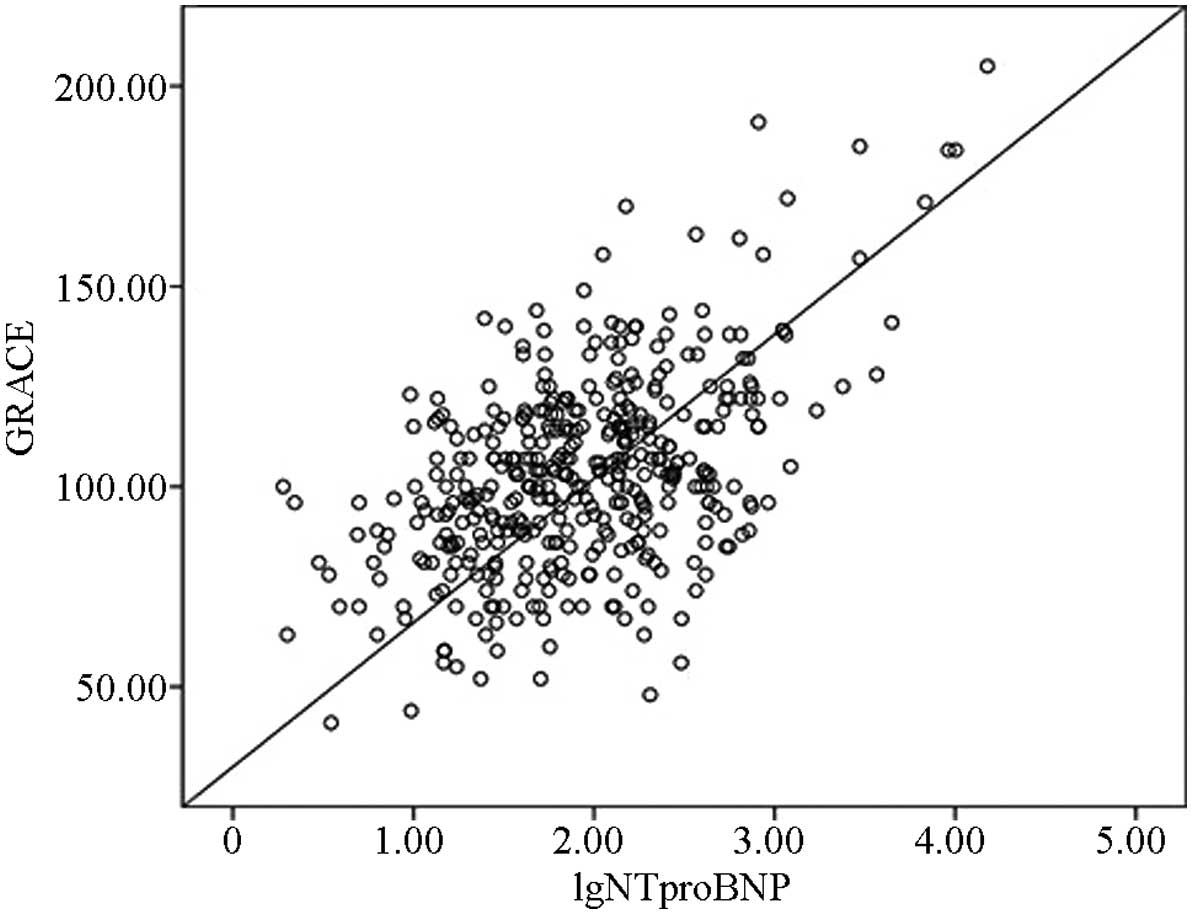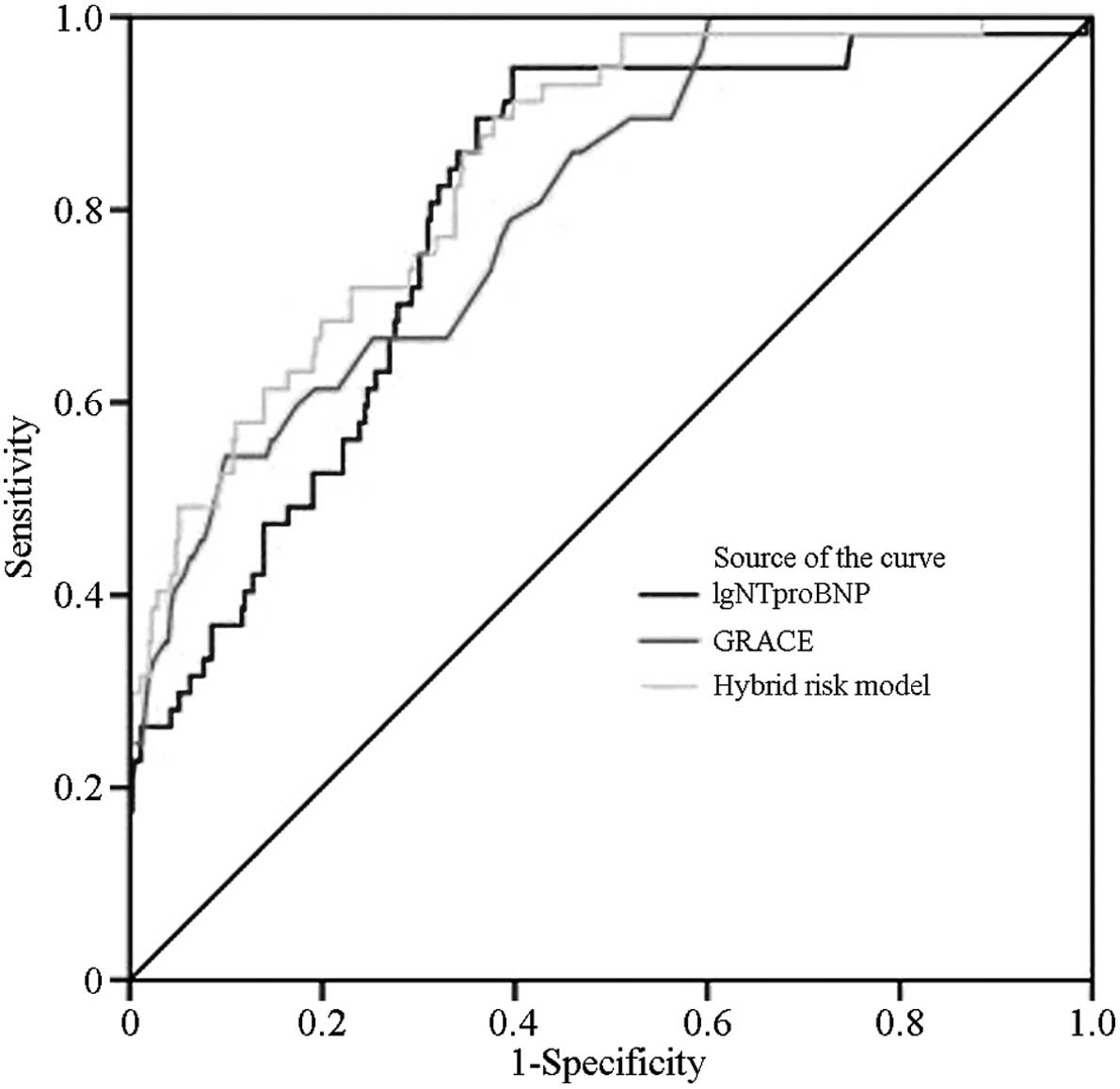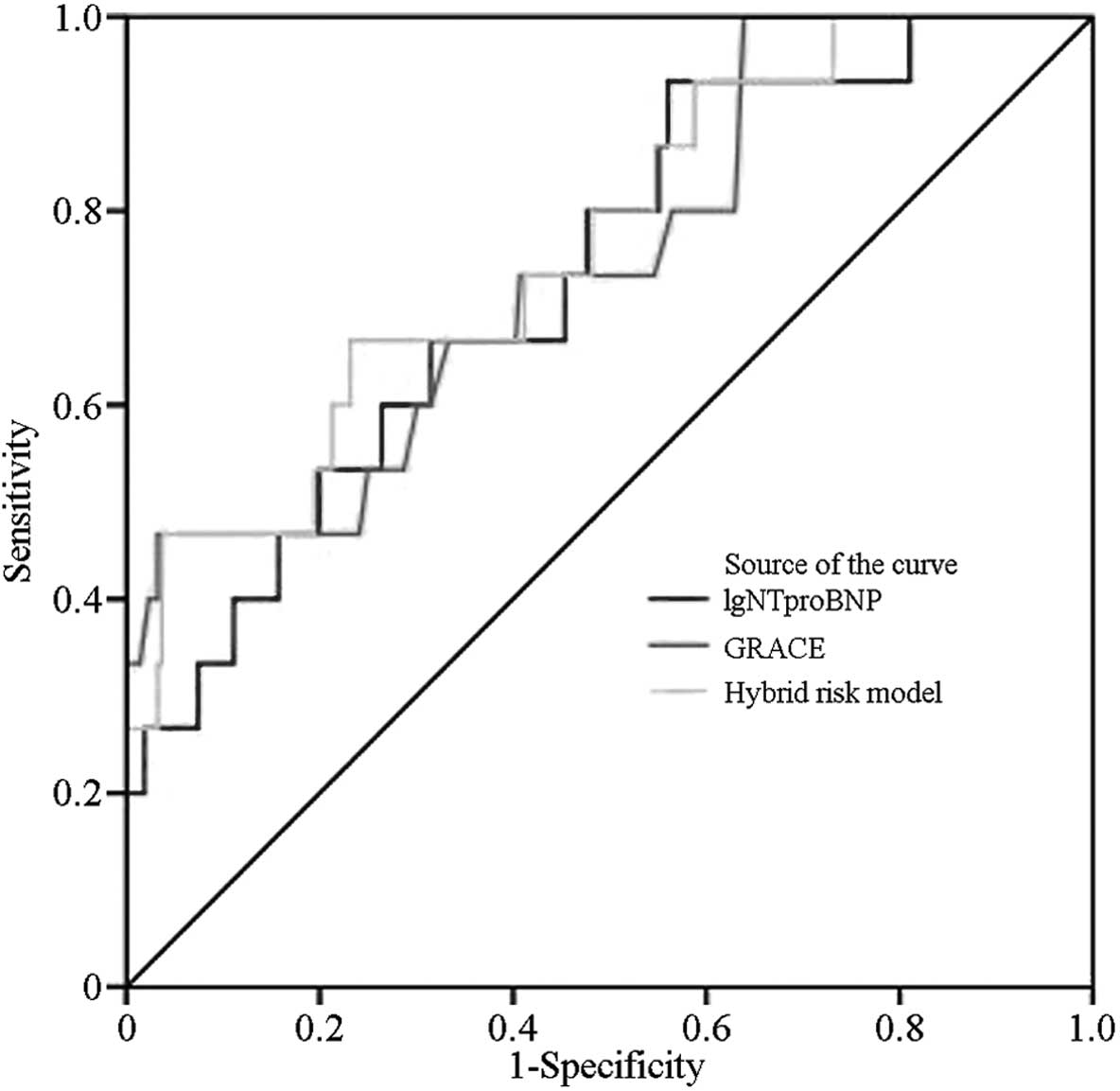|
1
|
Roffi M, Patrono C, Collet JP, Mueller C,
Valgimigli M, Andreotti F, Bax JJ, Borger MA, Brotons C, Chew DP
and Gencer B: 2015 ESC Guidelines for the management of acute
coronary syndromes in patients presenting without persistent
ST-segment elevation: Task force for the management of acute
coronary syndromes in patients presenting without persistent
ST-segment elevation of the European Society of Cardiology (ESC).
Eur Heart J. 2015.ehv320
|
|
2
|
Anderson JL, Adams CD, Antman EM, Bridges
CR, Califf RM, Casey DE Jr, Chavey WE II, Fesmire FM, Hochman JS,
Levin TN, et al: American College of Cardiology; American Heart
Association Task Force on Practice Guidelines (Writing Committee to
Revise the 2002 Guidelines for the Management of Patients With
Unstable Angina/Non-ST-Elevation Myocardial Infarction); American
College of Emergency Physicians; Society for Cardiovascular
Angiography and Interventions; Society of Thoracic Surgeons;
American Association of Cardiovascular and Pulmonary
Rehabilitation; Society for Academic Emergency Medicine: ACC/AHA
2007 guidelines for the management of patients with unstable
angina/non-ST-elevation myocardial infarction: A report of the
American College of Cardiology/American Heart Association task
force on practice guidelines (writing committee to revise the 2002
guidelines for the management of patients with unstable
angina/non-ST-elevation myocardial infarction) developed in
collaboration with the American College of Emergency Physicians,
the Society for Cardiovascular Angiography and Interventions, and
the Society of Thoracic Surgeons endorsed by the American
Association of Cardiovascular and Pulmonary Rehabilitation and the
Society for Academic Emergency Medicine. J Am Coll Cardiol.
50:e1–e157. 2007. View Article : Google Scholar : PubMed/NCBI
|
|
3
|
Amsterdam EA, Wenger NK, Brindis RG, Casey
DE Jr, Ganiats TG, Holmes DR Jr, Jaffe AS, Jneid H, Kelly RF,
Kontos MC, et al: American College of Cardiology; American Heart
Association Task Force on Practice Guidelines; Society for
Cardiovascular Angiography and Interventions; Society of Thoracic
Surgeons; American Association for Clinical Chemistry: 2014 AHA/ACC
guideline for the management of patients with non-ST-elevation
acute coronary syndromes: A report of the American College of
Cardiology/American Heart Association Task Force on Practice
Guidelines. J Am Coll Cardiol. 64:e139–228. 2014. View Article : Google Scholar : PubMed/NCBI
|
|
4
|
Khalill R, Han L, Jing C and Quan H: The
use of risk scores for stratification of non-ST elevation acute
coronary syndrome patients. Exp Clin Cardiol. 14:e25–e30.
2009.PubMed/NCBI
|
|
5
|
Granger CB, Goldberg RJ, Dabbous O, Pieper
KS, Eagle KA, Cannon CP, Van De Werf F, Avezum A, Goodman SG,
Flather MD, et al: Predictors of hospital mortality in the global
registry of acute coronary events. Arch Intern Med. 163:2345–2353.
2003. View Article : Google Scholar : PubMed/NCBI
|
|
6
|
Eagle KA, Lim MJ, Dabbous OH, Pieper KS,
Goldberg RJ, Van de Werf F, Goodman SG, Granger CB, Steg PG, Gore
JM, et al: A validated prediction model for all forms of acute
coronary syndrome: Estimating the risk of 6-month postdischarge
death in an international registry. JAMA. 291:2727–2733. 2004.
View Article : Google Scholar : PubMed/NCBI
|
|
7
|
Kozieradzka A, Kamiński KA, Maciorkowska
D, Olszewska M, Dobrzycki S, Nowak K, Kralisz P, Prokopczuk P and
Musial WJ: GRACE, TIMI, Zwolle and CADILLAC risk scores - do they
predict 5-year outcomes after ST-elevation myocardial infarction
treated invasively. Int J Cardiol. 148:70–75. 2011. View Article : Google Scholar : PubMed/NCBI
|
|
8
|
Lindahl B, Toss H, Siegbahn A, Venge P and
Wallentin L: Markers of myocardial damage and inflammation in
relation to long-term mortality in unstable coronary artery
disease. FRISC study group. Fragmin during instability in Coronary
artery disease. N Engl J Med. 343:1139–1147. 2000. View Article : Google Scholar : PubMed/NCBI
|
|
9
|
Morrow DA, Antman EM, Giugliano RP, Cairns
R, Charlesworth A, Murphy SA, de Lemos JA, McCabe CH and Braunwald
E: A simple risk index for rapid initial triage of patients with
ST-elevation myocardial infarction: An In TIME II substudy. Lancet.
358:1571–1575. 2001. View Article : Google Scholar : PubMed/NCBI
|
|
10
|
Meune C, Drexler B, Haaf P, Reichlin T,
Reiter M, Meissner J, Twerenbold R, Stelzig C, Freese M, Winkler K
and Mueller C: The GRACE score's performance in predicting
in-hospital and 1-year outcome in the era of high-sensitivity
cardiac troponin assays and B-type natriuretic peptide. Heart.
97:1479–1483. 2011. View Article : Google Scholar : PubMed/NCBI
|
|
11
|
Guidez T, Maréchaux S, Pincon C, Lamour H,
Barrailler S, Decourcelle V, Braun S, Bouabdallaoui N, Bauchart JJ,
Auffray JL, et al: Addition of B-type natriuretic peptide to the
GRACE score to predict outcome in acute coronary syndrome: A
retrospective (development) and prospective (validation)
cohort-based study. Emerg Med J. 29:274–279. 2012. View Article : Google Scholar : PubMed/NCBI
|
|
12
|
Ang DS, Wei L, Kao MP, Lang CC and
Struthers AD: A comparison between B-type natriuretic peptide,
global registry of acute coronary events (GRACE) score and their
combination in ACS risk stratification. Heart. 95:1836–1842. 2009.
View Article : Google Scholar : PubMed/NCBI
|
|
13
|
Bosseau C, Galli E and Donal E: Prognostic
value of BNP in heart failure with preserved or reduced ejection
fraction. Heart. 101:1855–1856. 2015.PubMed/NCBI
|
|
14
|
Gong H, Wang X, Ling Y, Shi Y and Shi H:
Prognostic value of brain natriuretic peptide in patients with
heart failure and reserved left ventricular systolic function. Exp
Ther Med. 7:1506–1512. 2014.PubMed/NCBI
|
|
15
|
Tate S, Griem A, Durbin-Johnson B, Watt C
and Schaefer S: Marked elevation of B-type natriuretic peptide in
patients with heart failure and preserved ejection fraction. J
Biomed Res. 28:255–261. 2014. View Article : Google Scholar : PubMed/NCBI
|
|
16
|
Romel SM, Faruque M, Bari MA, Bari MS,
Aditya GP, Choudhury AK, Khalequzzaman M, Alam MM, Razzaque MA,
Rahman MA, et al: Association between elevated B-Type natriuretic
peptide levels with extent of coronary artery disease in patients
with unstable angina and NSTEMI. Mymensingh Med J. 23:544–551.
2014.PubMed/NCBI
|
|
17
|
Goyal BM, Sharma SM and Walia M: B-type
natriuretic peptide levels predict extent and severity of coronary
artery disease in non-ST elevation acute coronary syndrome and
normal left ventricular function. Indian Heart J. 66:183–187. 2014.
View Article : Google Scholar : PubMed/NCBI
|
|
18
|
Granger CB, Goldberg RJ, Dabbous O, Pieper
KS, Eagle KA, Cannon CP, Van De Werf F, Avezum A, Goodman SG,
Flather MD and Fox KA: Global Registry of Acute Coronary Events
Investigators: Predictors of hospital mortality in the global
registry of acute coronary events. Arch Intern Med. 163:2345–2353.
2003. View Article : Google Scholar : PubMed/NCBI
|
|
19
|
Fox KA, Dabbous OH, Goldberg RJ, Pieper
KS, Eagle KA, Van de Werf F, Avezum A, Goodman SG, Flather MD,
Anderson FA Jr and Granger CB: Prediction of risk of death and
myocardial infarction in the six months after presentation with
acute coronary syndrome: Prospective multinational observational
study (GRACE). BMJ. 333:10912006. View Article : Google Scholar : PubMed/NCBI
|
|
20
|
Pollack CV Jr and Braunwald E: 2007 update
to the ACC/AHA guidelines for the management of patients with
unstable angina and non-ST-segment elevation myocardial infarction:
Implications for emergency department practice. Ann Emerg Med.
51:591–606. 2008. View Article : Google Scholar : PubMed/NCBI
|
|
21
|
Bassand JP, Hamm CW, Ardissino D, Boersma
E, Budaj A, Fernandez-Aviles F, Fox KA, Hasdai D, Ohman EM,
Wallentin L, et al: Guidelines for the diagnosis and treatment of
non-ST-segment elevation acute coronary syndromes. Rev Port
Cardiol. 27:1063–1143. 2008.(In Portuguese). PubMed/NCBI
|
|
22
|
Omland T, Sabatine MS, Jablonski KA, Rice
MM, Hsia J, Wergeland R, Landaas S, Rouleau JL, Domanski MJ, Hall
C, et al: Prognostic value of B-Type natriuretic peptides in
patients with stable coronary artery disease: The PEACE Trial. J Am
Coll Cardiol. 50:205–214. 2007. View Article : Google Scholar : PubMed/NCBI
|
|
23
|
Killip T III and Kimball JT: Treatment of
myocardial infarction in a coronary care unit. A two year
experience with 250 patients. Am J Cardiol. 20:457–464. 1967.
View Article : Google Scholar : PubMed/NCBI
|
|
24
|
Fathy SA, Abdel Hamid FF, Zabut BM, Jamee
AF, Ali MA and Abu Mustafa AM: Diagnostic utility of BNP, corin and
furin as biomarkers for cardiovascular complications in type 2
diabetes mellitus patients. Biomarkers. 20:460–469. 2015.
View Article : Google Scholar : PubMed/NCBI
|
|
25
|
Salama R, El-Moniem A, El-Hefney N and
Samor T: N-terminal pro-BNP in acute coronary syndrome patients
with ST elevation (STE-ACS) versus non ST elevation (NSTE-ACS). Int
J Health Sci (Qassim). 5(2 Suppl 1): 27–29. 2011.PubMed/NCBI
|
|
26
|
Møller JE, Pellikka PA, Hillis GS and Oh
JK: Prognostic importance of diastolic function and filling
pressure in patients with acute myocardial infarction. Circulation.
114:438–444. 2006. View Article : Google Scholar : PubMed/NCBI
|
|
27
|
Richardson-Lobbedez M, Maréchaux S,
Bauters C, Darchis J, Auffray JL, Bauchart JJ, Aubert JM, LeJemtel
TH, Lesenne M, Van Belle E, et al: Prognostic importance of tissue
Doppler-derived diastolic function in patients presenting with
acute coronary syndrome: A bedside echocardiographic study. Eur J
Echocardiogr. 9:594–598. 2008. View Article : Google Scholar : PubMed/NCBI
|

















